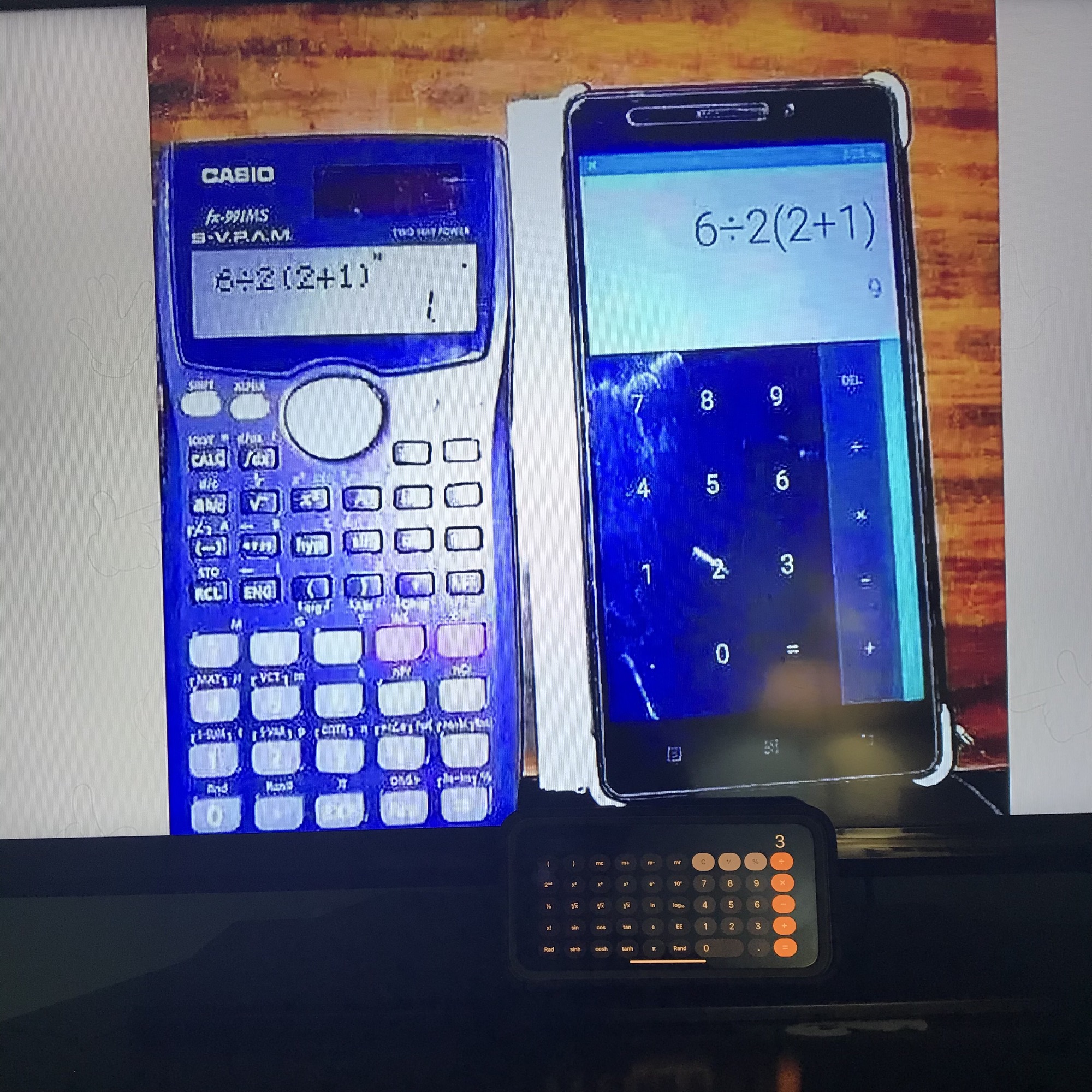Fun fact: this is because most basic calculators don’t follow order or operations and just calculate from left to right.
Best part is with phone calculator apps. In portrait mode, most don’t follow order of operations. In landscape mode with the scientific operations expanded, it does, so you get two different answers depending on what position your phone is in. It’s endlessly confusing.
Tried it one mine, works both ways
Mine too, I wonder where it doesn’t?
Best example I could find. Two phones in portrait and landscape, plus a dedicated scientific calculator.

Now I’m just confused how it got 3 in landscape (ಥ _ ಥ)
what?
deleted by creator
I am baffled the casio does it like that. Makes absolutely no sense.
What? It makes perfect sense. I thought everyone was in agreement about this.
6/2(1+2)=1
First, the brackets: 1+2=3. So far, so good, yes? Next to the brackets is number 2, so you have to multiply that first: 2*3=6. You’re left with 6/6, which comes to 1.
Google’s calculator, on the other hand, adds a set of brackets out of nowhere, completely altering the equation. The user typed in 6/2(1+2), but Google went ahead and altered it to (6/2)(1+2), which is absolutely not the same. Again, brackets first: 6/2=3 and 1+2 is still 3. The equation then becomes 33, which comes to 9. And while that is the correct result for that particular equation, it’s not what the user typed in and is thus incorrect.
Next to the brackets is number 2, so you have to multiply that first
Brackets come first, the order of operations for the division and multiplication is the same. The leftmost number takes precedence. You’re multiplying the two rightmost numbers. 6/2*(1+2)
= 6/23
= 33
= 9
No extra brackets are addedWelp, I guess it’s a good thing I never became a math teacher, because the way we were taught was to not only do the parentheses first, but also multiply the result with the number before the parentheses and then apply all other operations. Additionally, we were never taught the rule that the leftmost number takes precedence.
I never thought I’d be debating math problems rather than solving them, but here we are. Now if you’ll excuse me, I have a sudden urge to play Math Blaster.
The two equations are different. The order is not the same when writing the multiplication sign and when omitting it. When omitted, it takes precedence.
6÷2×(2+1) ≠ 6÷2(2+1).
Imagine it like a÷bc versus a÷b×c.
The variable “a” is a single term and “bc” is a single term too. “bc” is the same as (b)© but not the same as b×c when speaking of operations order.
Hmm interesting. I’ve never heard that omitting the multiplication sign affects the order of operations. It could be that it’s taught differently in different places. I’d probably interpret a/bc as (a/b)*c, though I’d be a bit confused seeing it written without parentheses.
deleted by creator
what?





